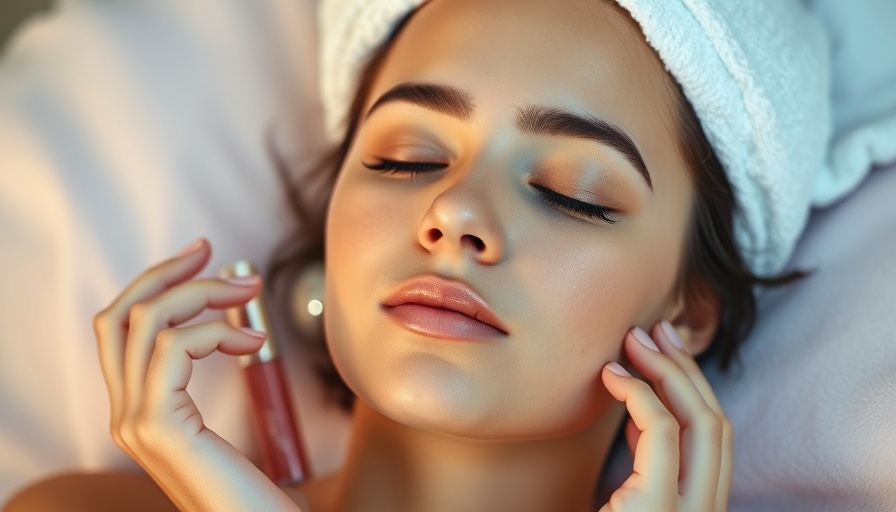
The Hidden Risks of Formaldehyde in Cosmetics
As more individuals strive for beauty and enhance their self-confidence, an alarming trend emerges with the rising use of beauty and personal care products. A recent study highlighted a concerning reality: many everyday products, including lotions and shampoos, may contain formaldehyde or preservatives that release this hazardous chemical. This revelation raises significant health concerns, particularly for vulnerable populations, including Black and Latina women who are often exposed disproportionately to these toxic substances.
Understanding Formaldehyde: The Silent Carcinogen
Known as a potent carcinogen, formaldehyde can wreak havoc on human health. The International Agency for Research on Cancer (IARC) categorizes it as a Group 1 human carcinogen, indicating that its link to cancer is well-established. Prolonged exposure increases the risk of developing serious conditions, including nasal cancers and leukemia. It is critical for consumers to understand that even minor contact with products containing formaldehyde can result in chronic issues such as skin rashes, asthmatic reactions, and more.
How to Identify Formaldehyde in Cosmetics
One of the many challenges consumers face is the tricky nature of ingredient labeling. The harmful chemicals that release formaldehyde often do not bear the name “formaldehyde” on the product's ingredient list. Ingredients like DMDM Hydantoin and Quaternium-15 may be present instead. Regularly used products such as shampoos, conditioners, eyelash adhesives, and baby wipes could harbor these preservatives, making it essential to scrutinize labels carefully.
Empowering Yourself: Steps to Minimize Exposure
While avoiding exposure to formaldehyde relies heavily on consumer vigilance, there are proactive measures to consider:
- **Read Labels Diligently:** Familiarize yourself with the chemical names linked to formaldehyde and choose products that specify “formaldehyde-free.”
- **Opt for Transparency:** Select brands that prioritize truthfulness in their ingredient lists. Seek out fragrance-free or hypoallergenic options, as these are less likely to include harmful preservatives.
- **Stay Informed:** Beyond just understanding the labels, educate yourself on the ongoing dialogue surrounding cosmetic regulations and their impact on consumer safety.
The Broader Social Context: Why Representation Matters
The focus on Black and Latina women in studies evaluating the effects of harmful chemicals in cosmetics draws attention to an important social issue. Many products marketed toward these demographics often contain harmful ingredients, exposing them to health risks more frequently than other groups. The cosmetic industry must prioritize transparency and safety as a standard, reflecting a commitment to all consumers.
Legal Ramifications: Brands at Risk?
With increasing scrutiny on formaldehyde content in cosmetics, brands that fail to observe safety regulations may face legal consequences. The emergence of lawsuits surrounding harmful ingredients signifies a shift toward greater accountability in the beauty industry. Consumers deserve protection and the right to safe, effective products.
What You Can Do as a Conscious Consumer
As a beauty enthusiast, fostering awareness about what goes on your skin is key. By being informed about the potential hazards of formaldehyde and its derivatives, you can make conscious choices that promote not only your health but contribute to industry-wide changes:
- **Educate Others:** Share the knowledge you gain about harmful substances in beauty products with peers and family members. Advocacy begins with awareness.
- **Support Brands that Care:** Choose to shop from companies that prioritize safety and transparency in their practices. Your purchasing power can influence brand accountability.
- **Engage in the Conversation:** Join online communities discussing beauty safety and support initiatives aimed at improving cosmetic regulations.
Understanding the implications of product ingredients empowers you to take charge of your health and wellbeing. Make the most informed decisions to protect yourself and those you care about from harmful chemicals.
Call to Action: As consumers, we hold the power to drive change. Let's demand safer beauty products and ensure that the cosmetics industry prioritizes our well-being.
 Add Row
Add Row  Add
Add 




Write A Comment